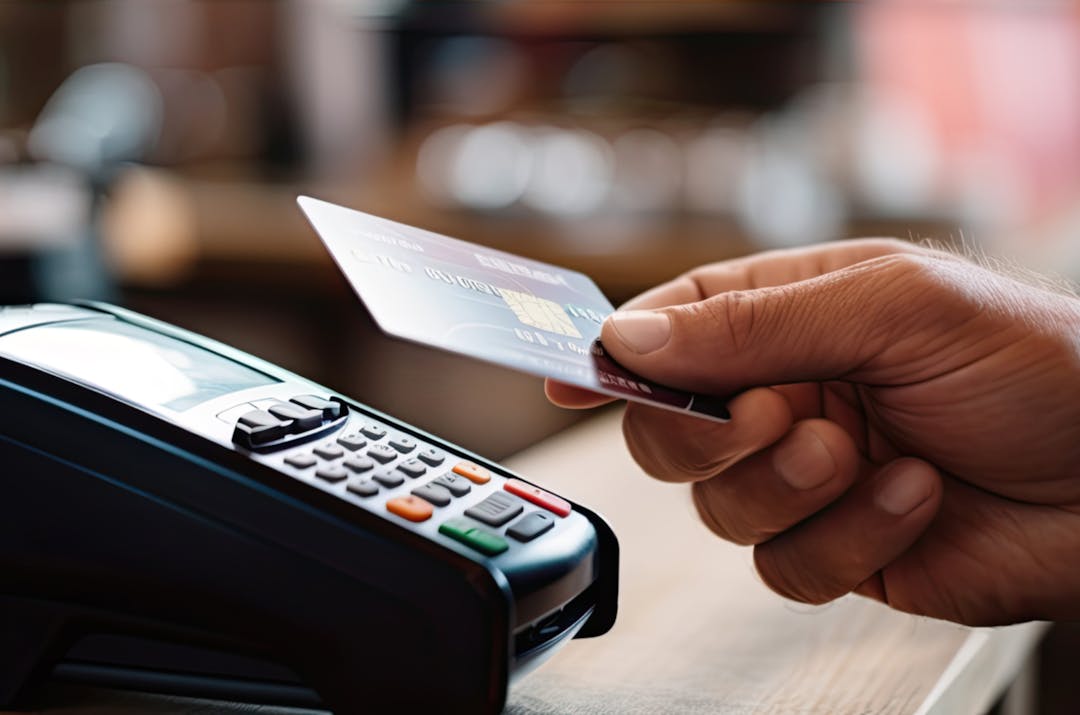The evolution of Open Banking
‘Open banking’ has become a popular phrase over the past few years with consumers and businesses alike, with studies predicting there will be up to 40 million users of the technology within the UK by 2025 (Zopa, 2021) . Yet, despite Open Banking's rising profile and rapid adoption, there is much confusion as to what it is.
Open Banking still feels like a newly coined term, but solutions are becoming more established and the fintech ecosystem is brimming with bright new organisations offering open banking services. With merchants looking for solutions that can provide a simple, frictionless, customer-focused payment journey, it is no surprise that open banking is taking off.
So, what is open banking?
Open banking is the process of enabling third-party payment services and financial service providers to securely access consumer banking information, such as transactions and payment history, utilising an API integration.
The aim of Open Banking is to improve the experience for all parties, ensuring fintechs, banks and other financial institutions can offer products and promote positive financial behaviours that alleviate pain points experienced by consumers.
The current functionality of Open Banking can be divided into five main areas:
- Payments
- Cash management
- Loans
- Personal finance management
- Customer authentication
The consumer benefits from all five of these areas with the ability to access all these features for all their bank accounts within a centralised platform.
Of these areas, payments have been one of the main factors in Open Banking’s growth as most projects (McKinsey & Company). Within payments, Open Banking cuts out the middleman, making payments more fluid on a national and international level. For merchants and consumers alike, Open Banking provides a seamless and secure checkout journey, with instant settlement from one account to another, providing easy reconciliation and real-time notifications on the transaction.
Why is Open Banking only just happening now?
The most significant factor in the growth of Open Banking, is legislation brought in by the EU, specifically its second payment services directive (PDS2). It is the legal framework for payment services within Europe and was first announced in 2015 and implemented during 2018. PDS2 essentially allowed account information services and payment initiation services to be combined into one, which makes the concept of Open Banking legally possible.
PDS2 was introduced for two primary reasons. Firstly, with the intention of increasing innovation within finance by allowing companies other than banks access to personal financial data and creating equal opportunity. Secondly, it provides the consumer with more freedom to control their finances through connectivity, ease and transparency.
Another driver is the sheer amount of investment within the fintech space. Despite the world economy being impacted by the pandemic, fintech organisations received $210 billion in investment in 2021 alone. This global surge of investment has led to huge amounts of innovation within the fintech ecosystem and specifically for Open Banking and payments.
Consumer demand is also playing a part too. With the rise in technology adoption and innovation, consumers want greater visibility, flexibility and control over their own financial engagements, including payments. The ease of use and transparency provided by Open Banking, makes it a highly desirable payment method for the discerning consumer.
Why is Open Banking becoming so popular with consumers and merchants?
Although the circumstances have created the opportunity for Open Banking, there needs to be a demand for the service to fuel growth, and there is significant benefit for both the merchant and consumer, which is driving its adoption.
Rigorous security for Open Banking payments
A benefit shared by both the customer and merchant is the security Open Banking provides, in particular against combatting fraud.
All Open Banking transactions require strong customer authentication (SCA), meaning the customer must authenticate the transaction with two different authentication methods, making Open Banking transactions more secure than using a credit or debit card.
Third parties who offer Open Banking services are required to follow bank authentication legislation too, to enable access. As a result, merchants do not need to hold customer passwords or personal, sensitive data, making carrying out card-not-present fraud extremely difficult.
Limitless transparency
Open Banking enables greater visibility of spending behaviour and with seamless transactions, customers can see their transaction movements in real-time. Not only this, but further applications of Open Banking have created tools for individuals to better manage their finances, monitoring spending habits, trends and setting limits to promote better financial wellbeing.
The same goes for the merchants too, with instant settlement through Open Banking. Digital retailers no longer need to wait days or weeks for funds to settle, providing you with an accurate, real-time handle on cashflow.
A seamless checkout experience
The ability to do account to account transactions via Open Banking provides consumers with a quick and frictionless checkout experience, as they no longer need to enter their card details. A seamless, secure checkout journey is what all merchants are striving for, and this supports greater return spending and wider customer loyalty initiatives too.
For merchants, Open Banking offers greater functionality for refunds, maintaining the positive customer sentiment after the checkout experience, through instant, easy refunds and real-time reconciliation and notifications.
What does the future hold for Open Banking?
The future of Open Banking is hard to predict due to the fact it is emerging technology and adoption greatly differs by country. In the UK for example, adoption rates are extremely high, largely due to legislation and a wealth of investment into FinTech. Countries such as Singapore, India, the USA and Japan have had a market driven approach. The demand for the service of Open Banking has spurred on its development, as opposed to the UK or Australia where regulatory changes have encouraged start-ups and scale-ups to pursue development, which in turn is starting to drive demand and the concept matures.
Digital identity and authentication development
One area rapidly expanding in Open Banking is the ability for digital identity and authentication.
Onboarding new digital customers can be a huge point of friction for an online retailer, the task of creating an account, entering personal details usually followed by a further verification process. For certain sectors this process can be even more challenging and complex, with the need for ID verification or credit checks.
These extra steps can be enough to deter a customer, resulting in the loss of opportunity and potential customer loyalty. Open Banking can combat this by enabling the merchant to collect the appropriate data for the customer from a wide range of different sources connected through Open Banking. Not only can Open Banking reduce the friction involved in the process, but further improve the speed and accuracy of checks.
Technology businesses could enter the banking market
As Open Banking evolves and intuitive technology companies encroach on the traditional banking space, there is discussion around whether technology organisations could pursue even more bank-like functionality.
With a wealth of financial expertise and in-house development capability, there could be further development to expand Open Banking integrations and connections into a wider array of banking offers, including loan management.
With customer experience playing a critical role in the adoption of Open Banking, it would not be surprising if technology companies are already exploring where their business model could head next to ensure a smooth customer conversion.
Merchants may look for further independence
Another potential future for Open Banking is if the merchants themselves look take control and bring some Open Banking solutions in-house through direct integrations. Merchants have the ability to integrate financial services into their offering, for example account to account purchasing for products, so they could further explore Open Banking via direct integration. This is one route merchants may explore to manage cost savings, but also to maximise internal data management to deliver a more personalised user experience.
Mainstream banking becomes agile
Another future for Open Banking could be widespread adoption from traditional banks.
Mainstream banks could use Open Banking to generate new value for both themselves and customers. Large banks could develop their very own Open Banking solutions and offer them directly to retailers. As well-established organisations, this could be a clever route for expansion to compete with scaling tech companies.
Where could payment orchestration provide support?
Payment orchestration is all about empowering merchants to provide greater choice and flexibility for customers, through tailored workflows. Open Banking is quickly becoming an important part of the payments landscape, as customers seek a frictionless way to pay, which provides real-time reporting on expenditure and minimal interaction at the checkout.
With a supportive orchestration layer, merchants can test, trial and innovate at speed to keep up with customer demand and access a wide range of different Open Banking providers, such as Moneyhub and Vyne, to suit commercial needs too. With the flexibility to access the entire payments ecosystem via one single integration, you can keep abreast of the latest innovations and changes in customer requirements, to always offer a smooth, customer-focused payments experience.
Open Banking is the future
Open Banking has the potential to be the future of transparent transactions, with its ability to give quicker, safer and more fluid payments across all channels.
It has taken the UK by storm, with Europe following, and despite varied adoption globally, momentum is still gathering as customers look for the most easy and efficient way to pay and consolidate expenditure in real-time.
There are a wealth of benefits and Open Banking start-ups, and scale-ups are pioneering some incredible technology and combined with orchestration, you can really start to build a bespoke payments journey that works for all parties. We cannot wait to see where Open Banking expands next.
If you would like more information about how BR-DGE can support, you in accessing over 250 different alternative payment methods including Open Banking providers such as Moneyhub and Vyne, get in touch with the team today.


